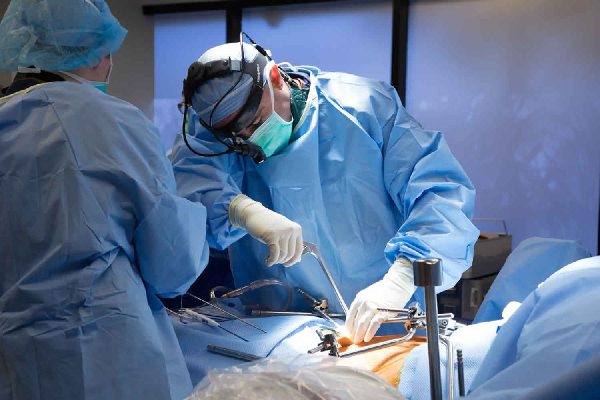Endoscopic spine surgery is a negligibly obtrusive methodology used to analyze and treat different spinal circumstances, offering patients a less intrusive option in contrast to conventional open surgery. This cutting-edge, careful method uses particular instruments and superior-quality imaging innovation to reach the spine through little entry points. This reduces tissue harm, more limited recuperation times, and fewer difficulties.
The Process of Endoscopic Spine Surgery
The course of endoscopic spine surgery regularly includes the accompanying vital stages:
- Preoperative Assessment: Before going through endoscopic spine surgery, patients undergo a complete preoperative assessment to evaluate their general well-being and reasonableness for the methodology. This assessment might incorporate actual assessments, demonstrative imaging, for example, X-ray or CT sweeps, and clinical history surveys. During this stage, the endoscopic spine specialist discusses the treatment plan with the patient, addressing any worries and questions.
- Sedation Organization: Upon the arrival of surgery, patients get sedation to guarantee their solace and well-being. Contingent upon the particular surgery and patient inclinations, either broad sedation or nearby sedation with sedation might be managed. The sedation group screens the patient’s important bodily functions, guaranteeing ideal sedation on the board.
- Entry point and Access: When the patient is suitably anesthetized, the endoscopic spine specialist makes little cuts, regularly under a centimeter in size, at the careful site. Through these little entry points, particular instruments and an endoscope — a meager, adaptable cylinder with a camera and light source — are embedded into the spine. The endoscope gives the specialist a reasonable perspective on the careful site, considering the exact representation and route.
- Careful Mediation: With the guide of the endoscope and particular instruments, the specialist carries out the vital careful mediation to address the spinal condition. This might incorporate methods, for example, decompression of squeezed nerves, expulsion of herniated circles, spinal combination, or adjustment of spinal sections. The specialist fastidiously explores the careful instruments, directed by ongoing imaging input given by the endoscope, to accomplish ideal outcomes while limiting injury to encompassing tissues.
Benefits of Endoscopic Spine Surgery
Endoscopic spine surgery offers various advantages to patients contrasted with conventional open surgery, making it an appealing choice for those looking for treatment for spinal circumstances.
This negligibly obtrusive methodology uses cutting-edge innovation and particular procedures to give designated alleviation while limiting injury to encompassing tissues. The following are five vital advantages of endoscopic spine surgery:
- Limited Tissue Harm: Unlike conventional open surgery, which requires enormous cuts and broad muscle analysis, endoscopic spine surgery includes more modest entry points and negligible interruption to encompassing tissues. This results in decreased injury to muscles, tendons, and different designs, prompting less postoperative agony and quicker patient recuperation times.
- Speedier Recuperation: Endoscopic spine surgery commonly considers faster recovery than conventional open surgery. In light of the more modest cuts and diminished tissue harm, patients frequently experience less agony, enlargement, and distress following the technique. This empowers them to continue their daily exercises sooner and rapidly return to work or typical life.
- Decreased Chance of Complexities: With its insignificantly obtrusive nature, endoscopic spine surgery conveys a lower hazard of intricacies than conventional open surgery. The more modest cuts bring about less dying, lower paces of contamination, and decreased hazard of harm to encompassing nerves and tissues. Moreover, the exact perception given by the endoscope permits more prominent precision during the strategy, limiting the gamble of careful mistakes.
- Protection of Spinal Dependability: Endoscopic spine surgery intends to safeguard spinal solidness while tending to the fundamental pathology. By focusing on the particular area of worry with accurate instruments and procedures, specialists can accomplish ideal results while limiting disturbance to the normal biomechanics of the spine. This is especially useful for patients with degenerative circle infection or spinal shakiness who expect intercession to reduce side effects without compromising spinal capability.
- Worked on Surface level Result: The more modest entry points utilized in endoscopic spine surgery bring about negligible scarring contrasted with conventional open surgery. This can prompt superior restorative results and more noteworthy patient fulfillment. With less apparent scarring, patients might feel more sure and alright with their appearance following the methodology.
Conclusion
When the surgery is finished, the specialist eliminates the instruments and shuts the entry points with stitches or glue strips. Patients are then moved to a recuperation region, where the clinical group firmly checks them. Contingent upon the intricacy of the surgery and the patient’s condition, a few people might have the option to get back that very day.
In contrast, others might require a short medical clinic stay for perception and torment the executives. All through the recuperation interaction, patients get directions for postoperative consideration, including action limitations, tormenting the executives, and follow-up meetings with the specialist. Also read more blogs.





